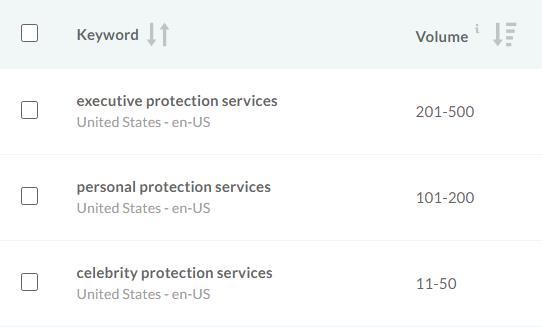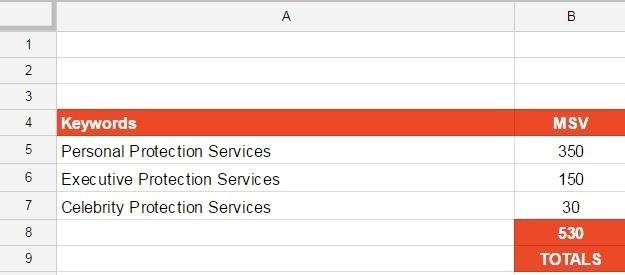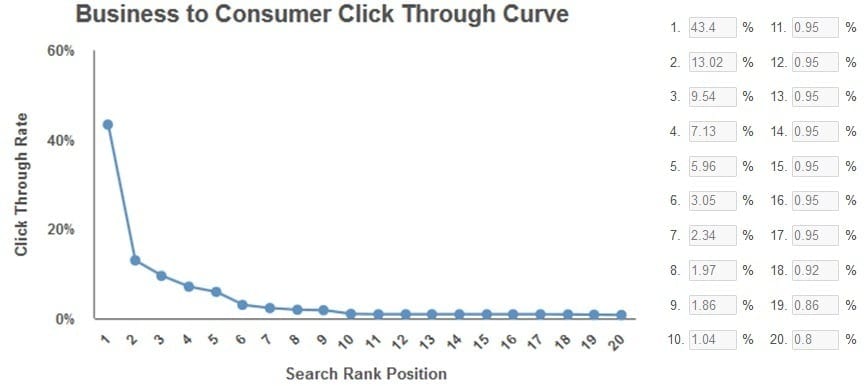A Step-by-Step Guide to Quantifying the Value of Content
In the sometimes-gray world of organic search marketing, conveying the value of your content strategies to a client can be difficult. The individuals you work with may often ask, why is this important? Or, why should we invest time in this? Fortunately for us, these are good questions that can be answered using the data that’s made available to SEOs and search marketing professionals. Here I’ll aim to address these questions directly and supply you with ammunition you’ll need to make a business case for content strategy and creation.
To do this, I’ll use a real-world example: our agency works with a private security company whose website had extremely thin content on many individual landing pages. We believed the lack of content on these pages was hindering their ability to rank in a competitive landscape.
Laying The Groundwork – Our team’s first step was to conduct an extensive round of competitive research specific to bodyguard services. We needed first to determine what resonated with searchers in this space, and what our competitors were doing effectively to gain visibility. We could then use that guide content improvements that would measure up to the competition, and more importantly, ensure it was the most comprehensive resource out there.
The problem was, before we could invest time and resources into enhancing the content, we needed to explain to the client why the project was necessary in the first place. To make sure we were as realistic as possible about results, in this business case, we looked at three specific keyword groups – Personal Security, Executive Security and Celebrity Security. Ultimately, the information uncovered in our research was used to carry out our content strategy. Here was our process is getting the green light to move forward with our plan.
Step 1: Outlining the Keyword Visibility Goals
First, focus on a small subset of “transactional keywords” (see below) and Identify monthly search volume associated with each keyword using one of these free tools Moz Keyword Explorer or Google’s Keyword Planner.
NOTE: The following keyword data has been generated using Moz’s Keyword Explorer. We recommend using “transactional keywords” or keywords amended with “services,” “products,” etc. because they represent a specific search intent.

Then, export your keyword data and copy and paste your keywords and corresponding search volumes into the first two columns or your working CSV or Google Sheet. This new document will be used to calculate your click through rate data, which will then be used to formulate your business case.
NOTE: Because Moz’s Keyword Explorer gives us a range consisting of minimum and maximum values our projections had to be averaged. This is done to ensure that our projections are attainable, which is particularly important when you need to justify results to the folks who rely on your SEO knowhow. After averaging the MSV, your working document should look something like this:

To better demonstrate the steps taken to arrive at our projections, we looked at three components:
- Projecting Organic Traffic by Position
- Projecting Conversion Rate by Position
- Projecting Goal Value by Position (show me the money)
Step 2: Projecting Organic Traffic by Position
Since our keyword categories involve personal, executive and celebrity protection services, (which implies a business to consumer relationship), our organic traffic projections in this post will be based off of a business to consumer (B2C) projection curve.

Building your business case will require a few simple formulas to set the foundation for your projections. But first, we need to input the percentages specific to the B2C model in the fields highlighted in green. To simplify the data-set, we’re looking exclusively at business to consumer click through rates for keywords ranking in positions 10, 5, 3 and 1.

To put this section into perspective, if “personal protection services” has 350 monthly searches and ranks in position 3 with a click through rate of 9.54%, we can expect to see roughly 33 organic monthly sessions from this keyword phrase. Easy right?
Absolute Reference Pro-Tip
=B5*$C$2
English translation: B5 or the monthly search volume of 350 multiplied by C2 or 1.04%, can be defined as an absolute value by using the $ symbol. An absolute cell reference always refers to a specific cell. Meaning when you drag the formula down its reference point of 1.04% will stay consistent for B6, B7, etc.
Step 3: Projecting Conversion Rates by Position
Projecting traffic is all well and good, but chances are an increase in 33 organic monthly sessions doesn’t mean all that much to your client. On the other hand, if you can project conversions based on sessions this tells a much more compelling story. So what is your conversion rate? Well, let’s see what Google Analytics has to say…
How To Find your Organic Conversion Rate
- Sign into your Google Analytics account
- Segment all traffic to Organic Traffic (because that’s what we’re measuring)
- Navigate to Conversions >> Goals >> Overview
- Segment the Goal Completions by Type (Contact Us, Form Submit, Etc.)
- View your Goal Conversion Percentage

Once you’ve identified your Goal Conversion Rate, enter the percentage into your business case document (G2).

So remember, if “personal protection services” (our keyword from the previous example) ranks in position 3 with a click-through rate of 9.54% we can expect roughly 33 monthly sessions. The value you’re about to enter using the formula above will help project the following – If “personal protection services” brings in 33 monthly searches and has a conversion rate of 12.57%, we can predict that by ranking in position 3 that the client will have received 4.2 monthly conversions. Pretty cool, huh?
If that doesn’t get you approval to enhance existing or build supplemental content that caters to your strategy than perhaps the final section of this business case will…
Step 4: Projecting Goal Value by Position
The last part of our business case is a simple one – estimate a goal value (K2) and multiply it by your newly identified conversion rate.

At this stage, we can project by ranking “personal protection services” in position 3 with a click through rate of 9.54%, they’ll receive 33 monthly sessions, resulting in 4.2 conversions, which will bring in an additional $4,197.12 each month. Now, we’ve answered the core questions outlined in the beginning of this post: why is this important? And why should I invest time in this? We’ve successfully provided data to justify our content initiative and have gone a step further by projecting value, which often resonates most with business owners.

Simply put, providing data to showcase our content strategy helped the client make a data informed decision and in the end, it was an easy one to make. Today, the landing page discussed in this article is performing best to date. Through the process outlined in this post, we successfully created the most comprehensive bodyguard resource out there. Don’t believe me? Google it, you’ll find us… We’ve since rolled this out to additional landing pages and continue to do so as part of an ongoing initiative.
For those looking to replicate this process, the working document referenced in this post can be found here. If you’re looking to improve your search presence in a competitive space, than contact the devoted (and whimsical) folks at Amsive Digital.






